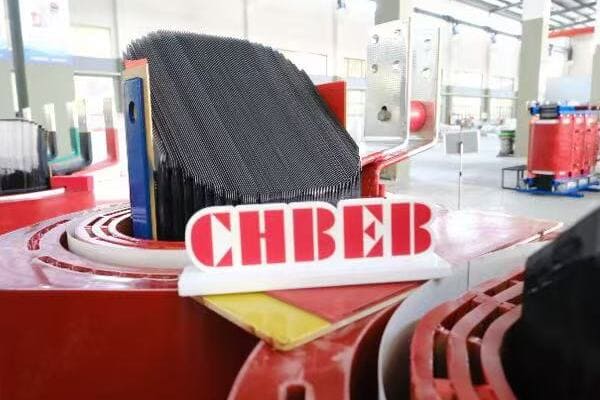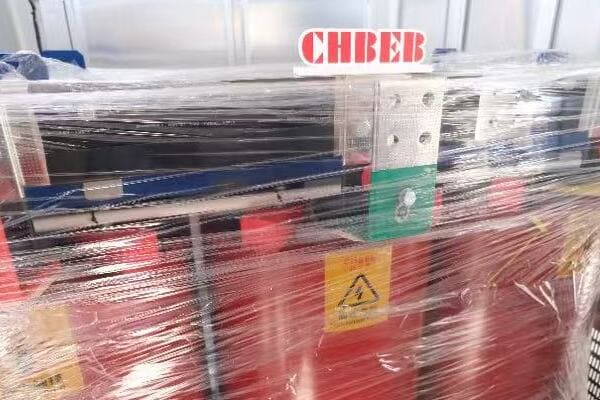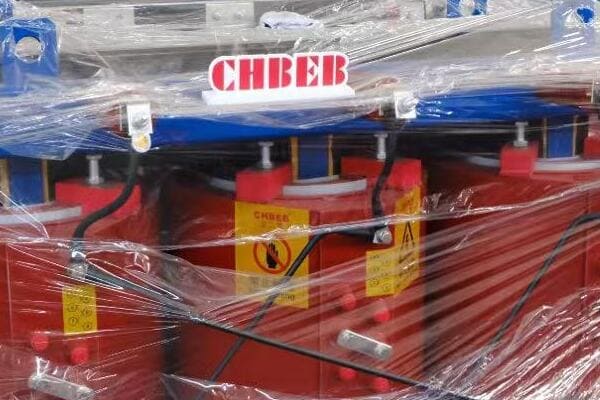Installation and Maintenance of Dry Type Distribution Transformers: Best Practices?
Are you struggling with the complexities of installing and maintaining dry type distribution transformers? You’re not alone. Many engineers and facility managers find themselves overwhelmed by the technical requirements and potential pitfalls. But what if you had a comprehensive guide to ensure your transformer installation and maintenance are always up to par?
Proper installation and maintenance of dry type distribution transformers are crucial for optimal performance and longevity. Best practices include thorough pre-installation checks, correct positioning, proper connection setup, comprehensive commissioning, regular maintenance schedules, and avoiding common mistakes. Following these guidelines ensures safety, efficiency, and reliability of your transformer installations.
In this comprehensive guide, I’ll walk you through the essential steps and best practices for installing and maintaining dry type distribution transformers. Whether you’re a seasoned engineer or a facility manager new to transformer management, this article will provide you with valuable insights to ensure your transformers operate efficiently and reliably for years to come.
Pre-Installation Checks: Site Conditions and Mounting Requirements?
Are you confident that your installation site is fully prepared for a dry type transformer? Overlooking crucial site conditions can lead to serious problems down the line. But what specific factors should you be checking before the transformer even arrives on site?
Pre-installation checks for dry type transformers are critical. Key factors include assessing site ventilation, foundation strength, ambient temperature, humidity levels, and altitude. Proper mounting requirements involve ensuring adequate space, load-bearing capacity, and accessibility. These checks prevent installation issues and ensure optimal transformer performance and longevity.
Key Pre-Installation Considerations
Let’s break down the essential pre-installation checks:
- Site Ventilation Assessment
- Foundation and Load-Bearing Capacity
- Environmental Conditions Evaluation
- Accessibility and Space Requirements
- Regulatory Compliance Checks
Site Ventilation Assessment
Proper ventilation is crucial for dry type transformers:
- Ensure adequate air flow around the transformer
- Check for potential obstructions to air circulation
- Consider the need for additional cooling systems in enclosed spaces
I once worked on a project where inadequate ventilation led to frequent overheating of a newly installed transformer. We had to retrofit the room with additional ventilation systems, which could have been avoided with proper pre-installation checks.
Foundation and Load-Bearing Capacity
The installation site must support the transformer’s weight:
- Verify the floor’s load-bearing capacity
- Ensure the foundation is level and stable
- Consider vibration dampening requirements
During a recent industrial installation, we discovered that the designated area’s floor couldn’t support the transformer’s weight. This led to last-minute redesigns and reinforcement, causing project delays and additional costs.
Environmental Conditions Evaluation
Assess the environmental factors that can affect the transformer:
- Measure ambient temperature ranges
- Check humidity levels and potential for condensation
- Consider altitude effects on cooling efficiency
Here’s a quick reference table for environmental considerations:
| Factor | Acceptable Range | Potential Issues |
|---|---|---|
| Temperature | -5°C to 40°C | Overheating, reduced efficiency |
| Humidity | < 95% | Insulation degradation |
| Altitude | < 1000m | Reduced cooling efficiency |
Accessibility and Space Requirements
Ensure there’s adequate space for installation and maintenance:
- Check clearances for ventilation and maintenance access
- Plan for cable entry and routing
- Consider future replacement or upgrade needs
I recall a project where we had to remove a wall to extract a failed transformer because the initial installation didn’t account for future replacement access. Proper planning could have prevented this costly and time-consuming issue.
Regulatory Compliance Checks
Verify compliance with local regulations:
- Check local electrical codes and standards
- Ensure fire safety requirements are met
- Verify environmental compliance (e.g., noise levels, EMF emissions)
Key pre-installation check considerations:
- Conduct a thorough site survey before finalizing installation plans
- Involve both electrical and structural engineers in the assessment
- Document all findings and share with relevant stakeholders
- Consider future needs and potential expansions in your planning
- Verify that the site meets all manufacturer-specified requirements
In my experience, thorough pre-installation checks are invaluable. I’ve seen projects where skipping these steps led to significant issues post-installation, from performance problems to safety hazards. Taking the time to properly assess and prepare the site can save substantial time, money, and headaches in the long run.
As we move forward to discuss transformer positioning and clearance guidelines, keep these pre-installation considerations in mind. They form the foundation for a successful and efficient transformer installation.
Transformer Positioning and Clearance Guidelines?
Are you unsure about the optimal placement for your dry type transformer? Proper positioning is crucial for performance, safety, and maintenance accessibility. But what specific guidelines should you follow to ensure your transformer is correctly placed with adequate clearances?
Proper transformer positioning involves ensuring adequate clearance for ventilation, maintenance access, and safety. Key guidelines include maintaining minimum distances from walls and other equipment, ensuring unobstructed air flow, and considering future accessibility needs. Clearances typically range from 0.6m to 1.2m, depending on transformer size and local regulations.

Essential Positioning and Clearance Considerations
Let’s explore the key aspects of transformer positioning:
- Ventilation and Cooling Requirements
- Maintenance Access Clearances
- Safety and Fire Prevention Spacing
- Noise Considerations
- Future Expansion and Replacement Planning
Ventilation and Cooling Requirements
Proper air circulation is critical for dry type transformers:
- Ensure unobstructed air intake and exhaust paths
- Maintain minimum clearances from walls and ceilings
- Consider the direction of natural air flow in the room
I once worked on a project where a transformer was placed too close to a wall, restricting air flow. This led to frequent overheating issues until we repositioned the unit with proper clearances.
Maintenance Access Clearances
Adequate space for maintenance is essential:
- Allow enough room for technicians to work safely
- Ensure accessibility to all sides of the transformer
- Consider space for test equipment and tools
During a recent maintenance operation, we struggled to access a transformer’s terminals due to insufficient clearance. This highlighted the importance of planning for maintenance activities during initial positioning.
Safety and Fire Prevention Spacing
Adhere to safety guidelines for spacing:
- Follow local fire codes for minimum distances from combustible materials
- Ensure clear evacuation paths in case of emergencies
- Consider the need for fire suppression systems in the transformer area
Here’s a general guideline for clearances:
| Transformer Rating | Minimum Front Clearance | Minimum Side and Rear Clearance |
|---|---|---|
| Up to 1000 kVA | 0.9m (3 ft) | 0.6m (2 ft) |
| 1001-5000 kVA | 1.2m (4 ft) | 0.9m (3 ft) |
| Above 5000 kVA | 1.5m (5 ft) | 1.2m (4 ft) |
Note: Always check local regulations as they may have more stringent requirements.
Noise Considerations
Consider noise impact when positioning:
- Place transformers away from noise-sensitive areas if possible
- Use sound-absorbing materials or enclosures if needed
- Consider the cumulative effect of multiple transformers
Future Expansion and Replacement Planning
Plan for future needs:
- Allow space for potential additional transformers
- Ensure pathways for future replacement or removal
- Consider the impact of nearby equipment installations
Key positioning and clearance guidelines:
- Always refer to manufacturer specifications and local regulations
- Consider both current needs and future scenarios in your planning
- Involve facility management in decisions to ensure long-term practicality
- Document the final positioning and clearances for future reference
- Conduct a mock-up or simulation if possible, especially for complex installations
In my experience, proper positioning and clearance planning can prevent numerous issues down the line. I’ve seen cases where inadequate clearances led to not only performance issues but also safety hazards and costly relocations.
For instance, in a data center project, we initially placed transformers too close together to save space. This decision led to cooling inefficiencies and made maintenance challenging. We had to redesign the layout, which was far more costly than if we had planned properly from the start.
As we move on to discuss connection setup, remember that the positioning of your transformer sets the stage for all subsequent installation steps. Proper placement ensures not just optimal performance, but also safety and ease of maintenance for years to come.
Connection Setup: Terminals, Grounding, and Cable Routing?
Are you feeling overwhelmed by the complexities of setting up transformer connections? Proper connection setup is crucial for the safety and efficiency of your dry type transformer installation. But what are the key factors to consider when dealing with terminals, grounding, and cable routing?
Proper connection setup for dry type transformers involves careful attention to terminal connections, effective grounding, and strategic cable routing. Key considerations include using the correct lug sizes, ensuring proper torque on connections, implementing a robust grounding system, and routing cables to minimize electromagnetic interference. Correct setup ensures safety, efficiency, and longevity of the transformer installation.
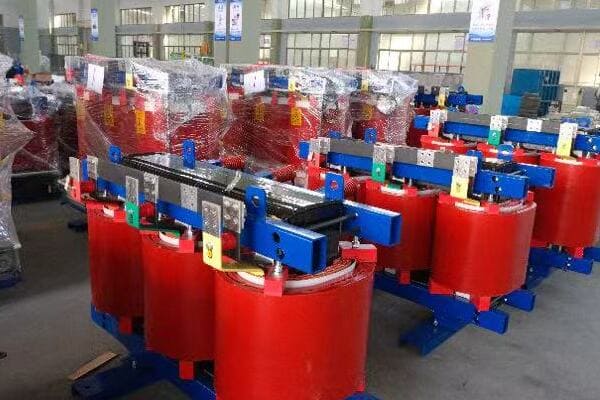
Essential Connection Setup Considerations
Let’s break down the key aspects of connection setup:
- Terminal Connection Best Practices
- Grounding System Implementation
- Cable Routing Strategies
- Insulation and Protection Measures
- Testing and Verification Procedures
Terminal Connection Best Practices
Proper terminal connections are critical:
- Use the correct lug size and type for the cables
- Ensure proper torque on all connections
- Implement anti-oxidation measures for long-term reliability
I once encountered a transformer failure caused by a loose terminal connection. The resulting arc damaged the transformer and caused a significant outage. This experience underscored the importance of proper terminal connection practices.
Grounding System Implementation
Effective grounding is essential for safety:
- Follow local electrical codes for grounding requirements
- Ensure low impedance path to ground
- Consider separate grounding for the transformer tank and core
During a recent installation, we discovered that the facility’s grounding system was inadequate for the new transformer. We had to upgrade the entire grounding system, highlighting the need for thorough assessment before installation.
Cable Routing Strategies
Proper cable routing enhances safety and performance:
- Separate high and low voltage cables
- Minimize cable bends and maintain proper bend radius
- Consider electromagnetic interference (EMI) in routing decisions
Here’s a quick guide for cable separation:
| Voltage Level | Minimum Separation Distance |
|---|---|
| Up to 1 kV | 0.3m (1 ft) |
| 1 kV – 33 kV | 0.6m (2 ft) |
| Above 33 kV | 1.0m (3 ft) |
Insulation and Protection Measures
Ensure proper insulation and protection:
- Use appropriate insulation materials for terminals and cables
- Implement barriers between high and low voltage sections
- Consider additional protection for harsh environments
Testing and Verification Procedures
Always verify connections before energizing:
- Perform insulation resistance tests
- Check continuity of all connections
- Verify proper phasing and polarity
Key connection setup considerations:
- Always follow manufacturer guidelines and local electrical codes
- Use proper tools and equipment for connections and testing
- Document all connection details for future reference
- Consider environmental factors that may affect connections over time
- Implement a quality control process to double-check all connections
In my experience, meticulous attention to connection setup is crucial for long-term reliability. I’ve seen cases where seemingly minor oversights in connection setup led to major issues down the line.
For example, in a industrial plant project, improper cable routing led to electromagnetic interference issues that affected sensitive equipment. We had to redesign and reinstall the cabling, which was far more costly and time-consuming than doing it correctly initially.
As we move forward to discuss commissioning and safety tests, remember that proper connection setup forms the foundation for safe and efficient transformer operation. Taking the time to get these details right can prevent numerous issues and ensure the longevity of your installation.
Commissioning Checklist and Safety Tests?
Are you confident that your newly installed dry type transformer is ready for operation? Proper commissioning and safety testing are crucial steps that can’t be overlooked. But what specific checks and tests should you perform to ensure your transformer is safe and functioning optimally?
Commissioning a dry type transformer involves a comprehensive checklist of inspections and tests. Key steps include visual inspections, insulation resistance tests, turns ratio tests, and no-load tests. Safety tests encompass ground resistance checks, polarization index measurements, and partial discharge tests. These procedures ensure the transformer is correctly installed, safe to operate, and performing as expected.

Essential Commissioning and Safety Test Procedures
Let’s explore the key aspects of commissioning and safety testing:
- Visual and Mechanical Inspections
- Electrical Tests and Measurements
- Functional and Performance Checks
- Safety-Specific Tests
- Documentation and Reporting
Visual and Mechanical Inspections
Start with thorough visual checks:
- Verify proper installation and alignment
- Check for any shipping or installation damage
- Ensure all connections are properly tightened
I recall a project where a visual inspection revealed hairline cracks in the transformer casing, likely from mishandling during transport. Catching this early prevented potential failures down the line.
Electrical Tests and Measurements
Perform essential electrical tests:
- Insulation resistance test
- Turns ratio test
- Winding resistance measurement
- Core insulation test
During a recent commissioning, an insulation resistance test revealed moisture ingress in one of the windings. This discovery allowed us to address the issue before energizing the transformer, potentially preventing a major failure.
Functional and Performance Checks
Verify the transformer’s operation:
- No-load test to check core losses and excitation current
- Heat run test (if applicable)
- Noise level measurement
- Partial discharge test for medium voltage transformers
Here’s a quick reference for key electrical tests:
| Test | Purpose | Typical Acceptance Criteria |
|---|---|---|
| Insulation Resistance | Check insulation integrity | > 1 MΩ per kV of rated voltage |
| Turns Ratio | Verify winding ratio | Within 0.5% of nameplate ratio |
| Winding Resistance | Check for winding issues | Within 2% of factory test results |
| No-Load Loss | Verify core quality | Within 10% of guaranteed values |
Safety-Specific Tests
Ensure all safety features are functioning:
- Ground resistance test
- Polarization index test
- Verify operation of temperature monitoring devices
- Check functionality of cooling fans (if applicable)
Documentation and Reporting
Maintain comprehensive records:
- Document all test results and observations
- Compare results with factory test reports
- Prepare a detailed commissioning report
- Ensure all safety certifications are in order
Key commissioning and safety test considerations:
- Always follow manufacturer guidelines and industry standards
- Use calibrated test equipment for accurate results
- Ensure proper safety measures during testing
- Involve qualified personnel in all testing procedures
- Address any anomalies or unexpected results before energizing
In my experience, thorough commissioning and safety testing are invaluable for ensuring transformer reliability and safety. I’ve seen cases where skipping or rushing through these steps led to serious issues after energization.
For instance, in a data center project, a rushed commissioning process missed a minor wiring issue. This led to a partial failure shortly after going live, causing significant downtime and costs. A proper commissioning process would have caught and corrected this issue beforehand.
As we move on to discuss routine maintenance schedules, remember that proper commissioning sets the stage for the transformer’s entire operational life. Taking the time to perform these checks and tests thoroughly can prevent numerous issues and ensure optimal performance from day one.
Routine Maintenance Schedule: What to Inspect and When?
Are you unsure about how often to inspect your dry type transformer or what to look for during maintenance? A well-planned maintenance schedule is crucial for ensuring the longevity and reliability of your transformer. But what specific inspections should you be conducting, and how frequently?
Routine maintenance for dry type transformers typically includes monthly visual inspections, quarterly cleaning and tightness checks, and annual comprehensive examinations. Key areas to inspect include ventilation systems, insulation condition, terminal connections, and temperature monitoring devices. Regular maintenance prevents unexpected failures, ensures optimal performance, and extends the transformer’s lifespan.
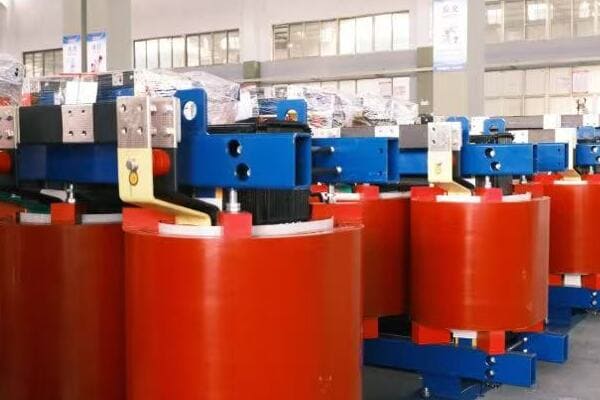
Comprehensive Maintenance Schedule
Let’s break down the maintenance schedule into different timeframes:
- Monthly Inspections
- Quarterly Maintenance
- Annual Comprehensive Checks
- Three-Year In-Depth Assessments
- Condition-Based Maintenance Considerations
Monthly Inspections
Perform these quick checks every month:
- Visual inspection for any obvious signs of damage or deterioration
- Check for unusual noises or vibrations
- Verify proper operation of cooling fans (if applicable)
- Monitor and record temperature readings
I once discovered a developing issue during a routine monthly inspection when I noticed unusual vibrations from a transformer. This early detection allowed us to schedule maintenance before a major failure occurred.
Quarterly Maintenance
Every three months, conduct more thorough checks:
- Clean air vents and check for proper air circulation
- Inspect and tighten all accessible connections
- Check for signs of overheating on terminals and cables
- Verify operation of all monitoring devices
During a quarterly maintenance session, I found loose connections on the low-voltage side of a transformer. Addressing this promptly prevented potential overheating and performance issues.
Annual Comprehensive Checks
Perform these detailed inspections annually:
- Conduct insulation resistance tests
- Check core and coil tightness
- Perform infrared scanning to detect hot spots
- Test all protection devices and alarms
Here’s a quick reference for annual maintenance tasks:
| Task | Purpose | Action if Issues Found |
|---|---|---|
| Insulation Resistance Test | Check insulation integrity | Schedule detailed assessment if values decline |
| Infrared Scanning | Detect hot spots | Investigate cause and repair as needed |
| Protection Device Test | Ensure safety systems are functional | Repair or replace faulty devices immediately |
| Visual Inspection of Windings | Check for signs of deterioration | Schedule detailed assessment or repairs |
Three-Year In-Depth Assessments
Every three years, consider more comprehensive evaluations:
- Perform partial discharge tests (for medium voltage transformers)
- Conduct power factor tests
- Analyze insulation for signs of aging
- Consider oil analysis for sealed dry-type units
Condition-Based Maintenance Considerations
Implement condition monitoring for more efficient maintenance:
- Use online monitoring systems for real-time data
- Adjust maintenance schedules based on actual transformer condition
- Implement predictive maintenance techniques using collected data
Key maintenance schedule considerations:
- Always follow manufacturer recommendations for maintenance intervals
- Keep detailed records of all inspections and maintenance activities
- Train personnel properly in maintenance procedures and safety protocols
- Use trending analysis to identify developing issues early
- Consider environmental factors that may necessitate more frequent checks
In my experience, a well-implemented maintenance schedule can significantly extend a transformer’s life and prevent unexpected failures. I’ve seen cases where neglected maintenance led to premature transformer failure, resulting in costly downtime and replacements.
For example, in a manufacturing plant, a transformer that hadn’t been properly maintained for years suddenly failed due to insulation breakdown. This could have been prevented with regular inspections and timely interventions. The resulting production stoppage cost the company far more than a proper maintenance program would have.
As we move on to discuss common installation mistakes to avoid, remember that a robust maintenance schedule is your best defense against unexpected failures and performance issues. Regular, thorough maintenance not only ensures reliability but can also help you identify potential problems before they become critical.
Common Installation Mistakes to Avoid?
Are you worried about making costly errors during your dry type transformer installation? It’s a valid concern, as installation mistakes can lead to performance issues, safety hazards, and premature transformer failure. But what are the most common pitfalls, and how can you avoid them?
Common installation mistakes for dry type transformers include improper ventilation, incorrect grounding, inadequate clearances, and poor cable management. Other errors involve neglecting proper leveling, ignoring environmental factors, and rushing through commissioning tests. Avoiding these mistakes ensures optimal performance, safety, and longevity of the transformer installation.
Key Installation Mistakes to Avoid
Let’s explore the most frequent installation errors and how to prevent them:
- Ventilation and Cooling Oversights
- Grounding and Connection Errors
- Clearance and Accessibility Issues
- Environmental Factor Negligence
- Commissioning and Testing Shortcuts
Ventilation and Cooling Oversights
Proper cooling is crucial for transformer operation:
- Mistake: Blocking air intake or exhaust paths
- Mistake: Ignoring the need for additional cooling in enclosed spaces
- Solution: Ensure unobstructed airflow and consider forced cooling if necessary
I once encountered a transformer that was overheating due to its installation in a poorly ventilated room. We had to retrofit the space with additional ventilation systems, a costly fix that could have been avoided with proper initial planning.
Grounding and Connection Errors
Correct grounding and connections are essential for safety and performance:
- Mistake: Inadequate or improper grounding
- Mistake: Loose or improperly sized terminal connections
- Solution: Follow grounding standards meticulously and use proper torque on all connections
During a recent installation, we discovered that the facility’s grounding system was inadequate for the new transformer. Upgrading the entire grounding system was necessary, highlighting the importance of thorough site assessment before installation.
Clearance and Accessibility Issues
Proper spacing is crucial for maintenance and safety:
- Mistake: Insufficient clearance for maintenance access
- Mistake: Ignoring future replacement or upgrade needs
- Solution: Adhere to recommended clearances and plan for future accessibility
Here’s a quick reference for minimum clearances:
| Transformer Rating | Front Clearance | Side and Rear Clearance |
|---|---|---|
| Up to 1000 kVA | 900 mm (3 ft) | 600 mm (2 ft) |
| 1001-5000 kVA | 1200 mm (4 ft) | 900 mm (3 ft) |
| Above 5000 kVA | 1500 mm (5 ft) | 1200 mm (4 ft) |
Environmental Factor Negligence
Environmental conditions significantly impact transformer performance:
- Mistake: Ignoring ambient temperature and humidity levels
- Mistake: Failing to protect against dust or corrosive atmospheres
- Solution: Assess environmental conditions thoroughly and implement necessary protective measures
Commissioning and Testing Shortcuts
Proper commissioning is crucial for long-term reliability:
- Mistake: Skipping or rushing through essential tests
- Mistake: Failing to document test results properly
- Solution: Follow a comprehensive commissioning checklist and maintain detailed records
Key considerations to avoid installation mistakes:
- Always refer to manufacturer guidelines and local regulations
- Conduct thorough site assessments before installation
- Use qualified personnel for installation and commissioning
- Double-check all aspects of the installation before energizing
- Maintain detailed documentation throughout the installation process
In my experience, taking the time to avoid these common mistakes can save significant time, money, and headaches in the long run. I’ve seen projects where rushing through installation led to serious issues that could have been easily prevented.
For instance, in a data center project, inadequate clearance was left around a transformer due to space constraints. This made maintenance difficult and eventually led to overheating issues. We had to relocate the transformer, a costly and disruptive process that could have been avoided with proper initial planning.
As we move on to discuss brand-specific maintenance cases and export examples, remember that careful attention to detail during installation sets the foundation for reliable transformer operation throughout its lifespan. Avoiding these common mistakes not only ensures optimal performance but also enhances safety and ease of maintenance.
Brand-Specific Maintenance Cases and Export Examples?
Are you curious about how different transformer brands perform in real-world scenarios, especially in export markets? Understanding brand-specific maintenance cases and export examples can provide valuable insights for your transformer selection and maintenance strategies. But what can we learn from these cases, and how do they apply to your projects?
Brand-specific maintenance cases reveal unique strengths and challenges of different transformer manufacturers. For instance, ABB’s VPE series excels in smart monitoring in UAE projects, while TBEA’s SCB10 series shows robust performance in harsh Pakistani environments. SUNTEN’s STD series demonstrates adaptability in Saudi Arabia’s smart city initiatives. These examples highlight the importance of choosing the right brand for specific application needs and environmental conditions.
Analyzing Brand-Specific Cases and Export Examples
Let’s explore some notable cases from leading transformer brands:
- ABB VPE Series in UAE Smart Grid Projects
- TBEA SCB10 Series in Pakistani Infrastructure
- SUNTEN STD Series in Saudi Arabian Smart Cities
- Siemens GEAFOL Series in Brazilian Industrial Applications
- Schneider Electric Trihal Series in Southeast Asian Data Centers
ABB VPE Series in UAE Smart Grid Projects
ABB’s VPE series has shown impressive performance in UAE:
- Application: Smart grid integration in Abu Dhabi
- Key Features: Advanced monitoring capabilities, high efficiency
- Maintenance Insights: Reduced need for physical inspections due to smart monitoring
I recently consulted on a project using ABB VPE transformers in Dubai. Their integrated monitoring systems allowed for predictive maintenance, significantly reducing downtime and maintenance costs.
TBEA SCB10 Series in Pakistani Infrastructure
TBEA’s SCB10 series has proven robust in challenging environments:
- Application: Power distribution in remote areas of Pakistan
- Key Features: High durability, adaptability to harsh conditions
- Maintenance Insights: Enhanced resistance to dust and high temperatures
During a visit to a TBEA installation in Pakistan, I was impressed by how well the SCB10 series handled the extreme desert conditions, requiring minimal additional maintenance despite the harsh environment.
SUNTEN STD Series in Saudi Arabian Smart Cities
SUNTEN’s STD series is making waves in smart city developments:
- Application: NEOM smart city project in Saudi Arabia
- Key Features: Compact design, compatibility with smart grid technologies
- Maintenance Insights: Easy integration with city-wide monitoring systems
Here’s a quick comparison of these brands in export scenarios:
| Brand | Model | Key Strength | Notable Export Case | Maintenance Advantage |
|---|---|---|---|---|
| ABB | VPE Series | Smart monitoring | UAE Smart Grids | Predictive maintenance |
| TBEA | SCB10 Series | Environmental durability | Pakistani Infrastructure | Low maintenance in harsh conditions |
| SUNTEN | STD Series | Smart city compatibility | Saudi NEOM Project | Easy integration with monitoring systems |
| Siemens | GEAFOL Series | Industrial grade performance | Brazilian Factories | Robust in high-load environments |
| Schneider | Trihal Series | Data center optimization | Southeast Asian IT Hubs | Efficient cooling in tropical climates |
Siemens GEAFOL Series in Brazilian Industrial Applications
Siemens GEAFOL transformers have shown excellent performance in industrial settings:
- Application: Large manufacturing plants in Brazil
- Key Features: High overload capacity, low noise levels
- Maintenance Insights: Consistent performance under heavy industrial loads
Schneider Electric Trihal Series in Southeast Asian Data Centers
Schneider’s Trihal series is popular in the growing data center market:
- Application: Data centers in Singapore and Malaysia
- Key Features: High efficiency, fire resistance
- Maintenance Insights: Excellent performance in high-humidity environments
Key takeaways from these brand-specific cases:
- Different brands excel in specific environmental conditions and applications
- Smart monitoring features are becoming increasingly important in maintenance strategies
- Durability and adaptability to harsh conditions are crucial for certain markets
- Integration with smart grid and city infrastructure is a growing trend
- Efficiency and reliability in specialized applications (like data centers) drive brand choices
In my experience, understanding these brand-specific strengths can be crucial in selecting the right transformer for a particular project. I’ve seen cases where choosing a brand known for its performance in specific conditions led to significant improvements in reliability and maintenance efficiency.
For example, in a recent project in a tropical climate, we chose Schneider Electric Trihal transformers for a data center due to their known performance in high-humidity environments. This choice resulted in fewer maintenance issues and better overall efficiency compared to previous installations with less suitable brands.
As we conclude this guide, remember that brand selection should be based on a thorough understanding of your specific project needs, environmental conditions, and long-term maintenance considerations. The right choice can lead to improved performance, reduced maintenance costs, and longer transformer lifespan.
Conclusion
Proper installation and maintenance of dry type transformers are crucial for their performance, safety, and longevity. By following best practices in pre-installation checks, positioning, connection setup, commissioning, and routine maintenance, you can ensure optimal operation. Understanding brand-specific strengths and learning from real-world examples helps in making informed decisions for your transformer projects, leading to improved reliability and efficiency.
Remember, at chbeb-ele, we’re not just sharing information – we’re empowering you to be part of the solution in creating a secure, clean, and efficient energy future. Let’s continue this journey together.
Recent Post
Quick Message
Request A free quote
We'd like to work with you
- +86 15558785111
- chbebgroup@chbebpower.com
- +86 15558785111
What We Do
CHINA BEI ER BIAN (CHBEB) GROUP, with 218 million in registered capital, originated from Beijing Beierbian Transformer Group. Headquartered in Beijing for R&D, it operates major production bases in Nanjing and Yueqing, producing high-quality products.
Latest Post
Latest Product
Contact Us
- +86 15558785111
- chbebgroup@chbebpower.com
- +86 15558785111
BeiJing
No 3,RongJing East Road,BeiJing Economic Technological Development Area,BeiJing,China
JiangSu
No 7️Xiangfeng Road,Jiangning,NanJing,JiangSu,China
WenZhou
No.211, Wei 16 Road, Industrial Zone, Yueqing, Wenzhou, Zhejiang, China.
XiangYang Industrial Zone ,YueQing,WenZhou,ZheJiang,China

